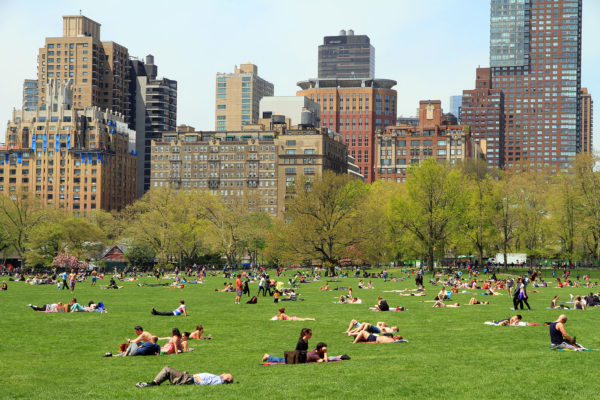A growing body of public health research has found that green spaces, such as community parks, have a greater impact on health than originally thought. Green spaces not only offer kids a place to exercise and play, but they have also been associated with deeper mental development, such as better cognition, self-discipline, and emotional well-being, as well as with reduced behavioral problems, such as ADHD. This cognitive, emotional, and social growth is a form of long-term development and can lead a healthier adult lifestyle.
In fact, the numerous benefits of green spaces have been so widely documented that some areas, such as the city of San Francisco, have adopted “park prescription programs.” Such initiatives between national and local parks and public health departments are encouraging families to visit their parks more often, whether national parks or small community playgrounds.
Children enjoying time outdoors at a neighborhood park
Image Source: Pete Ark
Unfortunately, research has shown that although socioeconomically disadvantaged and minority communities may have fairly equal access to green spaces as other groups, these green spaces are often of lower quality, smaller, and have safety concerns. Naturally, parents are cautious to allow their kids to play in areas that pose a health risk, so children often are not able to access the positive health benefits that these green spaces offer.
Kids are not the only group that benefits from parks. A report from the World Health Organization (WHO) found that pregnant women experience reduced depression and blood pressure when they are in parks. With frequent exposure to green spaces, pregnant women often deliver babies of healthier weights. For older adults, parks provide a place to strengthen social bonds, form a community, and avoid sedentary behavior.
In many ways, it is crucial that lower-income and minority communities have easy and abundant access to parks because the benefits of green spaces often compensate for other health disparities. For example, the WHO report states that individuals from minority groups and lower socioeconomic backgrounds who had access to quality green space self-reported better mental well-being scores than similar individuals who did not have access to quality green space. Additionally, disadvantaged communities experience higher levels of air pollution and, in areas of hot weather, higher exposure to heat stress and lower access to cooling systems. Both air pollution and heat can be somewhat offset by dedicated green spaces.
Recent research at the intersection of public health and urban planning hold promising new ways to improve our health. But as always, it is important to ensure that these newly understood health benefits are experienced equally by all our members of our communities.
Featured Image Source: Sheep Meadow by Ingfbruno










